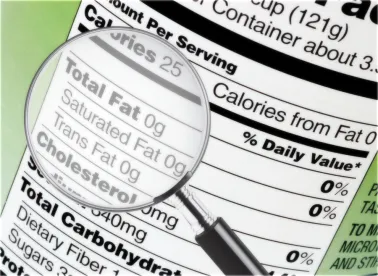The Food and Drug Administration (FDA) recently issued a draft guidance for manufacturers of human and animal food who want the labels of their products to indicate whether (or not) the products include ingredients derived from genetically engineered plants. The FDA states that its primary interest in the topic is to ensure such labels are truthful and not misleading.
The draft guidance begins by noting the FDA prefers to use the term “genetically engineered” plants over terms such as genetically modified and uses it to “describe the use of modern biotechnology.” It defines modern biotechnology in turn to mean “the application of in vitro nucleic acid techniques, including recombinant deoxyribonucleic acid (DNA) and direct injection of nucleic acid into cells or organelles, or fusion of cells beyond the taxonomic family, that overcome natural physiological reproductive or recombinant barriers and that are not techniques used in traditional breeding and selection of plants.”
The draft guidance has three substantive sections: (1) labeling for foods that were not produced using genetic engineering; (2) foods that were produced using genetic engineering; and, (3) substantiation of claims.
Foods Without Genetically Engineered Ingredients
The draft guidance states that food manufacturers may voluntarily label their products with information about whether the foods were not produced using bioengineering, as long as the information is truthful and not misleading. Examples of statements the FDA deems accurate about the absence of genetic engineering include:
“Not bioengineered.”
“Not genetically engineered.”
“Not genetically modified through the use of modern biotechnology.”
“We do not use ingredients that were produced using modern biotechnology.”
“This oil is made from soybeans that were not genetically engineered.”
“Our corn growers do not plant bioengineered seeds.”
Although the FDA states its preference for terms such as those above, in the draft guidance the FDA states that it will exercise enforcement discretion when a firm uses a phrase that includes the acronym “GMO.”
The FDA does not favor the term “genetically modified” because it can encompass any alteration to the genetic composition of a plant, including those achieved through traditional hybridization or breeding techniques, and thus applies to most cultivated food crops. Thus, the FDA discourages the use of this term or, alternatively, encourages firms to use the terms bioengineering, genetic engineering, or modern biotechnology in conjunction with claims using the term “genetically modified” or “genetic modification” to indicate that a plant-derived food has not been genetically engineered or bioengineered (e.g., “not genetically modified through the use of modern biotechnology”).
Because of the difficulty of substantiating a claim that a product is “free” of genetically engineered ingredients, the draft guidance recommends against the use of food labeling claims such as “GMO free,” “GE free,” “does not contain GMOs,” “non-GMO,” which indicate a food is “free” of ingredients derived through the use of biotechnology.
Further, the draft guidance notes a claim may be false or misleading if, when considered in the context of the entire label or labeling, it suggests or implies a food product or ingredient is safer, more nutritious, or otherwise has different attributes than other comparable foods because the food was not genetically engineered.
Foods With Genetically Engineered Ingredients
As examples of accurate statements about whether a food was produced using bioengineering, the draft guidance offers the following:
“Genetically engineered”
“This product contains cornmeal from corn that was produced using modern biotechnology.”
“Some of our growers plant soybean seeds that were developed through modern biotechnology to be drought tolerant.”
If a food derived from genetically engineered plants is significantly different from its traditional counterpart so the name no longer accurately identifies the food, the food has different uses or conditions of use, different nutritional properties, or allergens, simply labeling the food as genetically engineered could be misleading and additional statements may be needed to ensure the label is accurate.
Substantiation
A food manufacturer that claims a food product or its ingredients, including foods such as raw agricultural commodities, is bioengineered or is not bioengineered must substantiate that the claim is truthful and not misleading.
Substantiation may require documentation of handling practices and procedures to ensure, among other things, the food is not commingled with a different type of food that would render the label false or misleading.
The draft guidance states that foods complying with the USDA’s organic regulations (7 CFR Part 205) would satisfy the criteria to be labeled as not produced or handled using bioengineering.
Finally, the draft guidance notes that validated analytical methods may be useful in confirming the presence of bioengineered material in food derived from genetically engineered plants or food ingredients, but doubts any existing tests can satisfactorily establish the absence of any genetically engineered ingredients.
A copy of the draft guidance can be found here.




 />i
/>i
